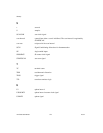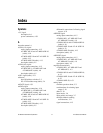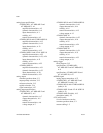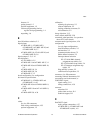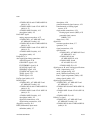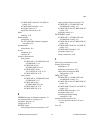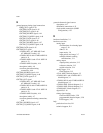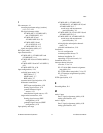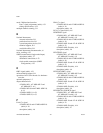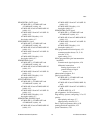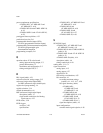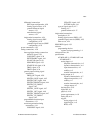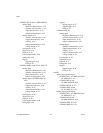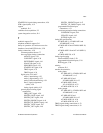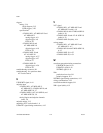Index
© National Instruments Corporation I-7 AT E Series User Manual
I
I/O connectors, 4-1
exceeding maximum ratings (caution),
4-15, 4-17, 4-28
I/O signal summary (table)
AT-MIO-16E-1, AT-MIO-16E-2,
and AT-MIO-64E-3, 4-8
AT-MIO-16E-10 and
AT-MIO-16DE-10, 4-10
AT-MIO-16XE-10 and
AT-AI-16XE-10, 4-12
AT-MIO-16XE-50, 4-13
signal descriptions (table), 4-5
IBF signal (table), 4-51
input characteristics
AT-MIO-16E-1, AT-MIO-16E-2 and
AT-MIO-64E-3, A-1
AT-MIO-16E-10 and AT-MIO-16DE-10,
A-12
AT-MIO-16XE-10 and AT-AI-16XE-10,
A-21
AT-MIO-16XE-50, A-30
input configurations, 4-18
available input modes, 3-6
DIFF (table), 3-7
NRSE (table), 3-7
RSE (table), 3-7
common-mode signal rejection, 4-26
differential connections
DIFF input configuration, 4-20
floating signal sources, 4-22
ground-referenced signal
sources, 4-21
nonreferenced signal sources, 4-22
single-ended connections, 4-24
floating signal sources (RSE
configuration), 4-25
grounded signal sources (NRSE
configuration), 4-25
input polarity and range
AT-MIO-16E-1, AT-MIO-16E-2,
AT-MIO-643-3, AT-MIO-16E-10, and
AT-MIO-16DE-10, 3-7
actual range and measurement
precision (table), 3-8
AT-MIO-16XE-10, AT-AI-16XE-10,and
AT-MIO-16XE-50, 3-8
AT-MIO-16XE-10, AT-MIO-16XE-50
actual range and measurement
precision (table), 3-9
mixing bipolar and unipolar channels
(note), 3-9
selection considerations, 3-10
installation
See also configuration
common questions about, C-2
hardware installation, 2-1
unpacking AT E series boards, 1-6
instrument drivers, D-1
interrupt channel selection
overview, 2-3 to 2-4
PC AT 16-bit DMA channel assignment
map (table), 2-6
PC AT I/O address map (table), 2-4 to 2-5
PC AT interrupt assignment map (table),
2-5to2-6
INTR signal (table), 4-51
K
KnowledgeBase, D-1
M
mode 1 input
Port C signal assignments (table), 4-50
timing specifications, 4-52
mode 1 output
Port C signal assignments (table), 4-50
timing specifications, 4-53



